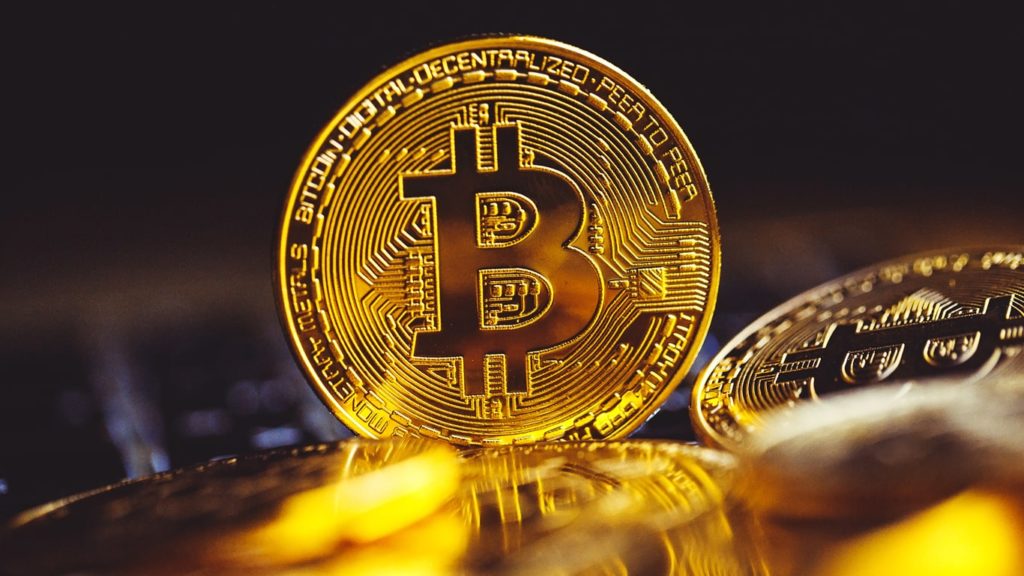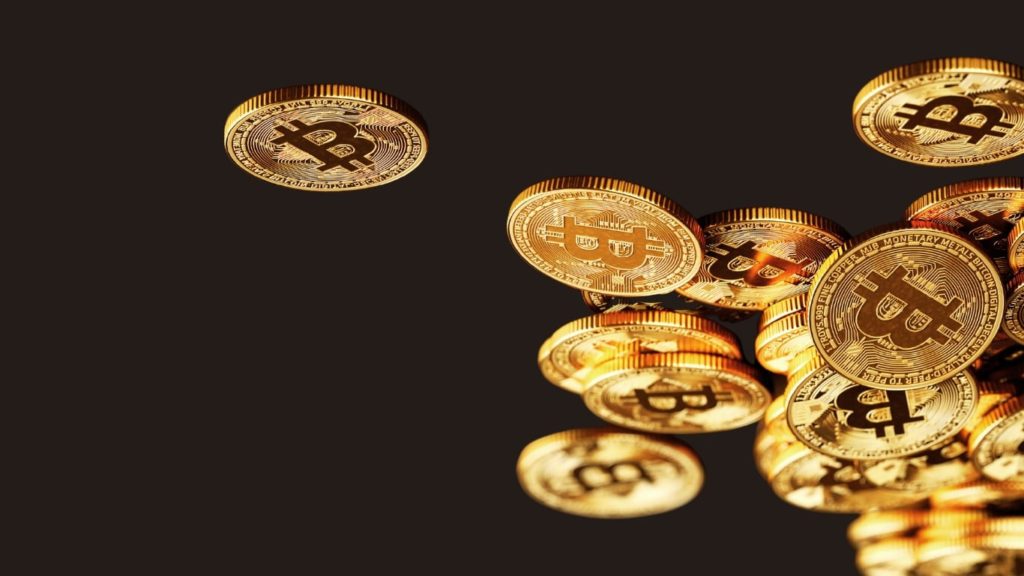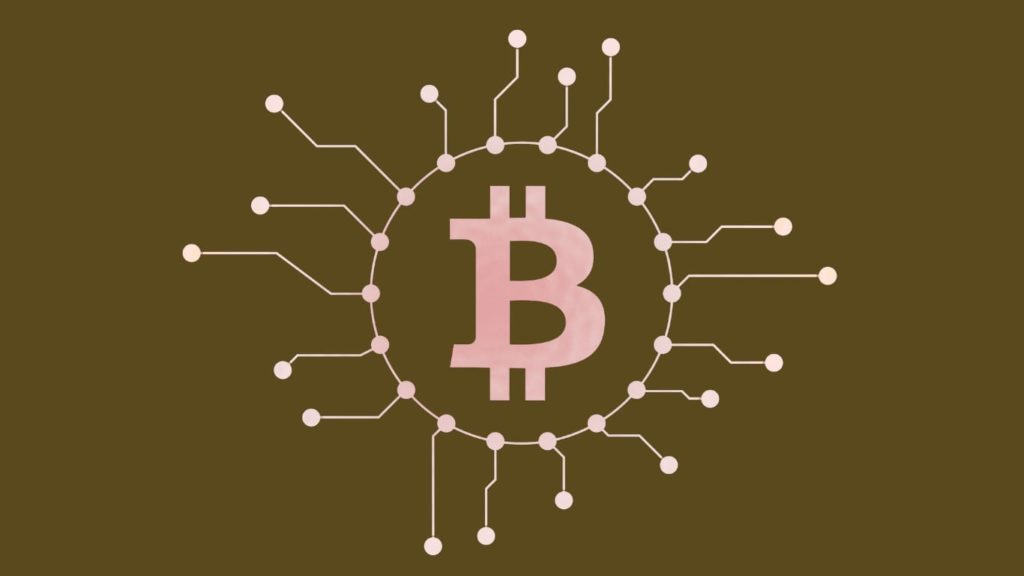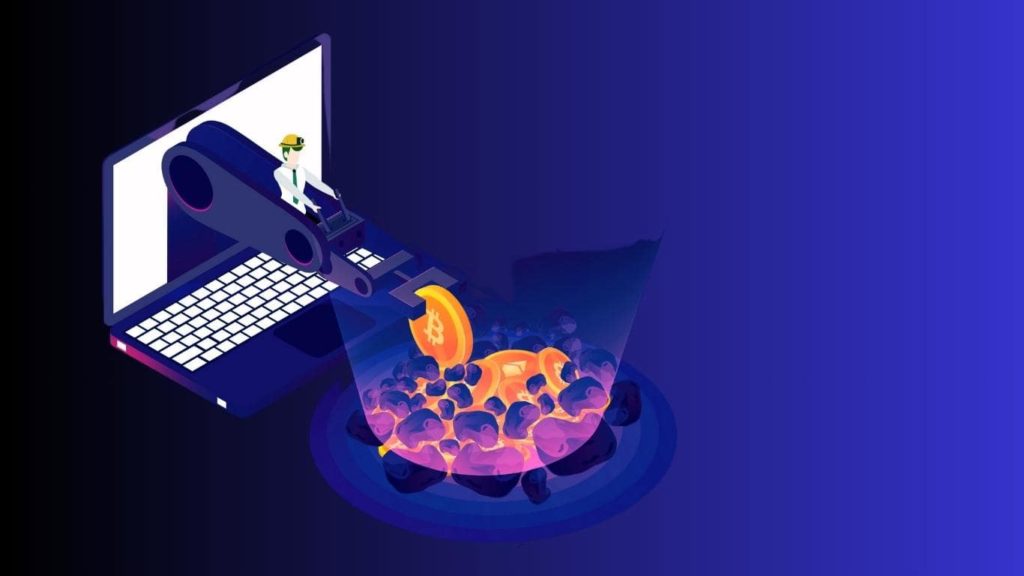
Bitcoin is the first cryptocurrency that became established and well-known across the world. In the year 2008, a mysterious person or group under the name of Satoshi Nakamoto published a white paper outlining how it would work. The Bitcoin network was officially launched on January 9, 2009. The value of this digital currency was $0 when it was introduced. Fast-forward to 2022, and the worth of Bitcoin is approximately $30,000, with an all-time high value being above $65,000 in the year 2021.
This might give you an idea of how volatile the cryptocurrency is. Nevertheless, the number of Bitcoin users is increasing rapidly, which brings us to this topic. We will walk you through what Bitcoin is, how it works, what Bitcoin mining is, and how secure it is. Let’s get started with its definition.
Definition of Bitcoin
Bitcoin is a decentralized digital currency, without a central bank or single administrator, that can be sent from user to user on the peer-to-peer Bitcoin network without the need for intermediaries.

The Bitcoin transactions are verified by network nodes through cryptography and recorded in a public distributed ledger called a blockchain.
We have been using fiat money for a long time and had our share of ups and downs with it. Several problems need to be solved, and the launch of Bitcoin made our situation better.
Firstly, fiat money is controlled by the central authority, giving them more power. Secondly, the ledger of transactions is not made available to the public. Lastly, the central authority can block access to funds at any moment.
To solve these issues, a decentralized system for digital currency was created.
Bitcoin is a transparent ledger without a central authority and the computer that participates in the system keeps a copy of the ledger, also known as blockchain technology. The decentralization makes it a good alternative to the existing system.
This means no central authority can control the digital currency. The ledger is transparent, and anyone can access transactions. The middleman is eliminated in this system, and hence transferring money is cheaper in Bitcoin than traditional means.
How does Bitcoin work?
Now that you know the meaning of Bitcoin, let’s understand its workings.

To begin with, you can send or receive Bitcoin in your wallet. When the user chooses to send it to other users, the wallet creates a transaction message. This message includes information regarding the sender, receiver, and amount.
Then, a unique signature is created for this transaction message with the help of the user’s private key. The best part about the digital signature is that it is unique for each transaction, consequently making the system more secure.
Now the transaction message along with the digital signature is grouped into a file which is sent to the nodes in the blockchain for verification.
The verification process includes checking if the funds that the user wants to spend are available along with checking the signature. After the verification process, the file is sent to other nodes in the network.
At this stage, the transactions are valid, yet they are pending to be confirmed. It is suggested not to accept unconfirmed payments as there’s a possibility they might not make it to the blockchain transaction ledger. Whereas, the confirmed transactions are those that are updated in the ledger.
Ergo, after verification, the file is stored in the memory pool of the nodes from where it is sent for the update in the blockchain. The next step in the process is Bitcoin mining which is explained in the following section.
In short, Bitcoin works by conducting direct transactions between users on a peer-to-peer network where they are verified by network nodes through cryptography and recorded in a public distributed ledger called a blockchain.
Bitcoin is “mined” by powerful computers that solve complex mathematical problems, with a fixed total quantity of 21 million bitcoins that can ever exist to prevent inflation.
Explanation of Bitcoin mining
Bitcoin mining is the process by which new bitcoins are entered into circulation, but it’s also a critical component of the maintenance and development of the blockchain ledger.

It involves solving complex mathematical problems using high-powered computer hardware, with the miner who solves the problem first being rewarded with a certain amount of Bitcoin.
With a centralized system, only the centralized authority has the right to update the ledger. With a decentralized system, anyone can participate in the process of doing so. To do this, they have to guess a random number that solves the system-generated equation.
The guessing work is done by the computer. This means the higher the computational power of the computer, the more guesses it can make per second to solve the equation. Once the equation is solved, the pending transactions are grouped into a block and sent together into the Bitcoin network. Here, the computer in the network validates the solution and updates the copy of the transaction in the ledger.
In other words, miners update the transaction ledger. In return, they get a fixed block reward along with any transaction fees attached to it. Block reward is the number of Bitcoins miners receive for successfully mining a block.
But roughly every 4 years, Bitcoin goes through the halving process. This means the value of the block reward decreases over time to combat inflation. For instance, the block reward was 50 Bitcoin in 2009, and after three halving events, it went down to 6.25. The next halving event is expected to occur in the year 2024 when the block reward will be 3.125 Bitcoin.
Miners spend their time and energy solving the equations and therefore are rewarded with Bitcoins, which further provide them incentives to continue mining. Even though miners get to mine new bitcoins from the system, the process is about confirming the transactions in the blockchain.
Now you understand the way this cryptocurrency and its mining work. This brings us to the question, is Bitcoin safe? Let’s explore this in the next paragraph.
Is using Bitcoins secure?
Undoubtedly, decentralization along with cryptography makes Bitcoin a secure system.
Unlike the centralized system, Bitcoin miners that update the ledger are dispersed across the globe. While it’s comparatively easy to target the centralized authority, targeting the decentralized system is next to impossible. It would require a lot of computational power along with that take up a lot of time. There are thousands of nodes in Bitcoin’s network.
Suppose one node is compromised, the other nodes and servers can prevent it. Moreover, considering the control is distributed in the system, it’s pointless to hack one server.
Additionally, Bitcoin has a transparent ledger, i.e., the public can view any transaction. However, you can only see the addresses of the senders and receivers of the transaction and not their real identities. This makes Bitcoin pseudo-anonymous, allowing the viewers to track the transaction without knowing who is conducting it, and with whom. All these factors make Bitcoin a trusted and protected system for transactions.
Real-life use cases of Bitcoin
Although a digital currency, Bitcoin has found real-life applications and uses, making it a valuable cryptocurrency. These uses are:
1. Global transactions
The most valuable trait of Bitcoin is its ability to make global payments, as it is not a centralized currency. Since Bitcoin doesn’t recognize any borders, it can be used for international trade or any personal exchange from anywhere in the world.
Furthermore, the exchange doesn’t actually need that much time since there is no need for the user to transform Bitcoin into something else, as it can be used directly as a mode of payment. Thus, it has already started impacting the remittance industry.
2. Digital Payments
Initially, the transaction speed of Bitcoin was relatively slow due to the block times and fees involved. But since the introduction of the Lightning Network, which is a Layer 2 network that sits atop the Bitcoin blockchain, the transactions have become faster and almost without any fee, thus opening the door for using Bitcoin as a digital payment solution, not only as a medium of exchange but also as a channel. Meaning, Bitcoin is no longer limited by only having a store of value, but it can also facilitate transactions.
3. Energy Monetization
Bitcoin mining requires resources such as electricity, and it is a lot enough to be a concern. It adds to the cost of Bitcoin, and many even believe that the benefits brought by the Bitcoin network simply aren’t enough to justify the energy consumed.
But there is a section of people who see merit even in this conundrum. They have come up with a solution that can even become a real-life usage of Bitcoin, which is monetizing energy standards.
4. Inclusion in the Economy
If we forget first-world countries such as the USA or Canada, which take digitization and modern banking services for granted, there are still many parts of the globe that don’t have access to proper economic channels. Bitcoin can act as a bridge for those who want a digitized payment solution, thus paving their way to the economy.
Bitcoin can allow those who haven’t experienced modern banking systems to be included in the financial system, becoming a part of the economy. Such financial freedom will also garner higher economic yields in the long run.
5. Anti-Censorship
Bitcoin is capable of operating even in highly censored areas. Thus, it can circumvent censorship and even corruption as it is a decentralized entity, no one can control it or yield outside influence. Although there is always a chance that Bitcoin itself can be used by bad actors, the medium has always remained free from influences such as corruption and censorship.
Comparing Bitcoin to similar cryptocurrencies
While Bitcoin is a popular cryptocurrency, there are also others that have left a mark on the market. We discussed the Bitcoin alternatives in detail previously. Now, let’s have a look at the table that compares Bitcoin to similar cryptocurrencies:
| Aspect | Bitcoin | Ethereum | Litecoin | Ripple |
|---|---|---|---|---|
| Origin | 2009 | 2015 | 2011 | 2012 |
| Founder | Satoshi Nakamoto | Vitalik Buterin | Charlie Lee | Chris Larsen, Jed McCaleb |
| Use Case | Digital Gold Standard | Smart Contracts and DApps | P2P transactions | Cross-border payments |
| Mechanism | Proof of Work | Proof of Stake | Proof of Work | Ripple Protocol Consensus |
| Algorithm used in Mining | SHA-256 | Ethash | Scrypt | No mining, as XRP is pre-mined. |
| All-time high | $68,789.63 | $4,891.70 | $412.96 | $3.84 |
| Current price | $36,425.60 | $1,952.59 | $69.77 | $0.61 |